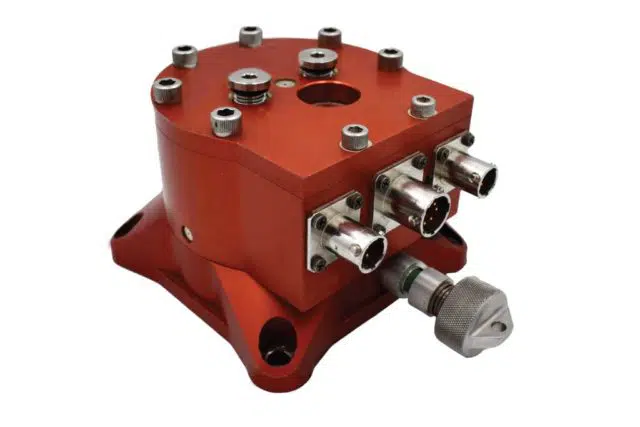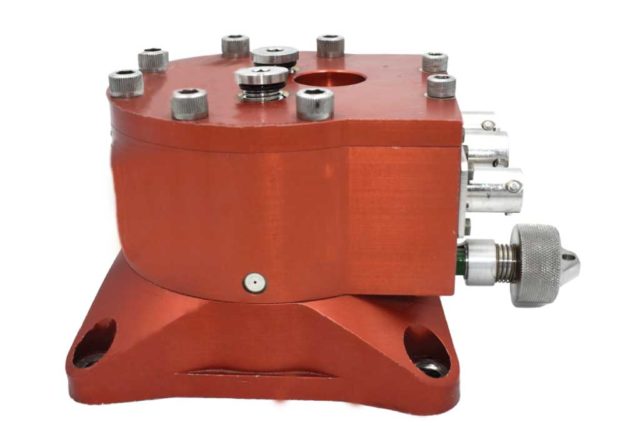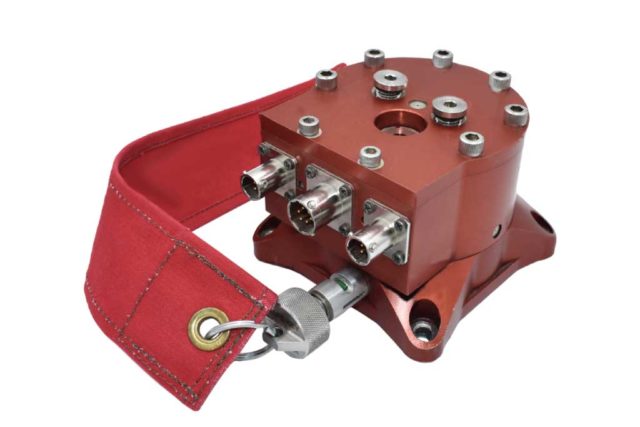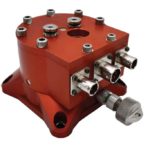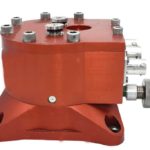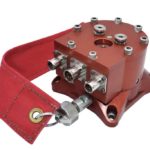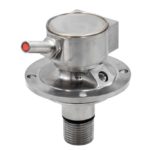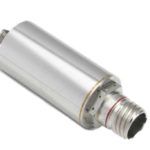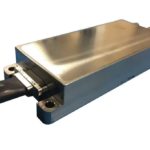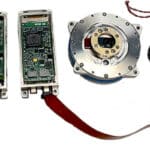Electro-mechanical Safe and Arm Device
Product Description
The Electro-mechanical Safe and Arm Device purpose is to prevent catastrophic damage from accidental arming of a device, during shipping, handling and storage, by initiating an explosive train only when needed. At the same time, the device arms the ordnance at the proper time when all of a set of predetermined conditions have been met. The safe and arm device will only initiate when it senses it has either hit or is in close proximity to the target.
The main function is to mitigate the hazards associated with the initiation of explosives by preventing inadvertent initiation while at the same time assuring the ordnance will detonate on command and only when commanded.
They are used in mission critical applications where a reliable initiation device that is intrinsically safe from inadvertent firing is required. Typical applications needing these mission critical attributes include rocket or missile motor ignition, stage separation, and flight termination. Our Electro-mechanical Safe & Arm Device (ESAD) designs are qualified and extensively used on a multitude of launch vehicle and missile platforms, including Atlas, Delta, and Antares to name a few. The design principles of safety and arming devices can be found outlined here.
The Electro-Mechanical Safe and Arm still uses a low voltage bridgewire initiator, however the initiator is integrated internally to the SAD and a mechanical device physically moves or rotates the initiator to a state where even if inadvertent initiation occurred, no pyrotechnic event transfers out of the SAD device. An internal initiator is physically rotated out of line inside the safe and arm from the output pyrotechnics, hence they are referred to as “Out-of-line” Safe and Arms.
If the low voltage initiator were to inadvertently initiate, it will not transfer any energy to the next device in the pyrotechnic chain. To be armed, the internal initiator must be mechanically rotated from an out of line state to an inline state prior to firing and it is only in that state that the initiator would reliably transfer energy to the next pyrotechnic in the chain.
- If a low voltage initiator is needed it can be coupled with an electromechanical SAD and still use a low voltage bridgewire type initiator.
- Arming an electromechanical safe and arm requires mechanical rotation of the initiator from an out-of-line state to an in-line-state prior to firing.
Key Features
How an Electromechanical Safe Arm Fire Device Works
The Electro-mechanical Safe & Arm Device is used to provide a reliable initiation of an explosive train when it is commanded in the ARM state and provided with the correct firing stimulus. The ESAD utilizes an Electro-Explosive Device (EED) for energetic output to initiate the explosive train.
When the SAD is in the SAFE position the device is intrinsically safe from Safe Arm Device inadvertently initiating the connected explosive train. In the SAFE position, the detonator is both electrically and mechanically isolated (rotated out-of-line with the output port) from any electrical inputs and explosive train outputs providing the needed intrinsic safety. The ESAD is commanded to the ARM state when the arming circuit is energized with the required input voltage pulse.
In the ARM state, the EED is rotated to the ESAD output port putting it in line with the explosive ordnance train. Once in the ARM state, the Electro-mechanical Safe and Arm Device can be initiated when the required electrical input stimulus is provided to the EED firing circuit.
The ESAD contains both local visual (window) and remote electrical redundant safe and arm position monitor circuits. This device also includes a safing mechanism for manual safing.
Specifications
- All-Fire
Minimum 3.5 AMP (5.0 AMP recommended) for 20 milliseconds - No-Fire
1 Amp/1 Watt for 5 minutes - Operating Temperature
-54 °F to +74 °F - Arming/Safing Voltage
22 to 35 VDC - Output
Detonation - Insulation Resistance
500 M at 500VDC - Electrostatic Discharge Immunity
25 KV / 500 pf / 5 K - Pre-function Leak Specification
5 x 10-5 standard cc/second of Helium - Applicable Specifications
Detonator qualified to MIL-STD-1576 and MIL-STD-454
Meets requirements of MIL-STD-464 (EMI)
Designs compliant to RCC-319
FAQ's
-
Is it qualified?
Depending upon its use, we have designs qualified to all pertinent mil-specifications.
